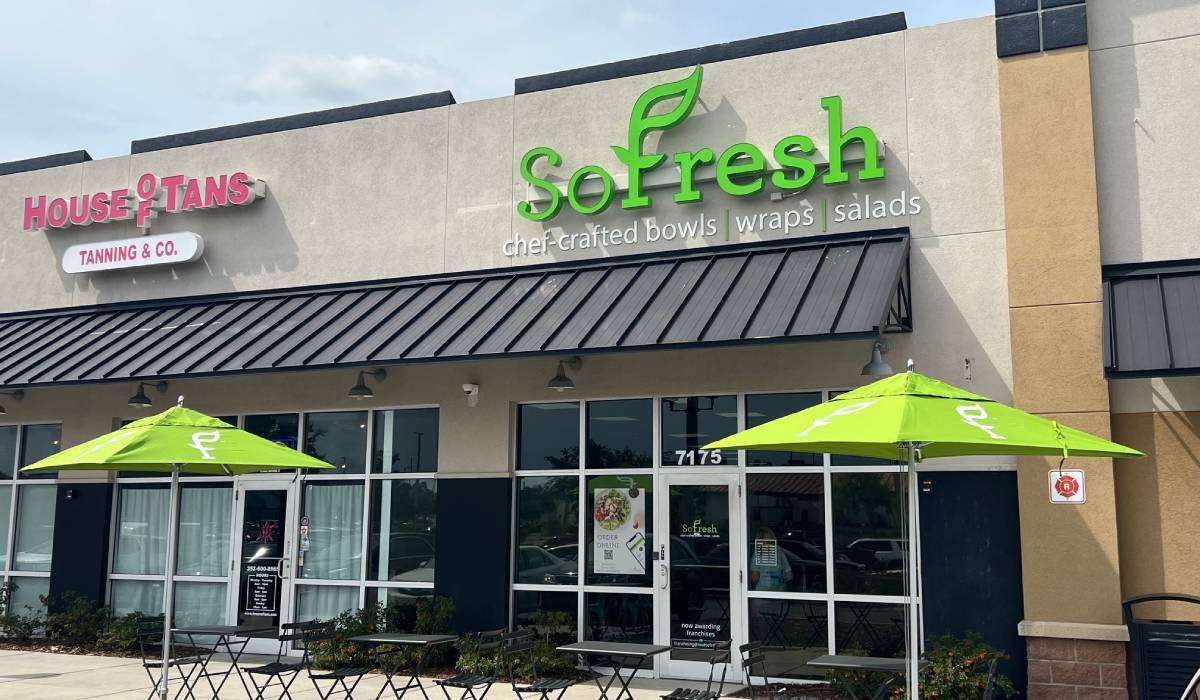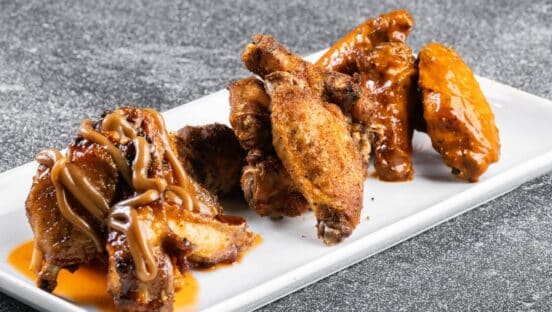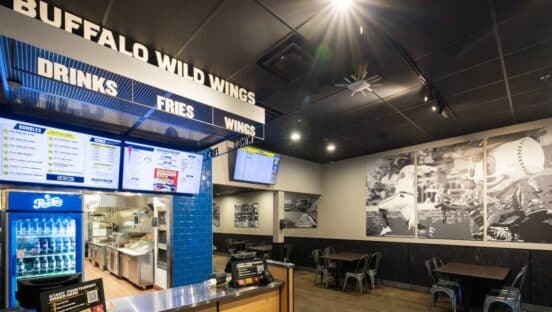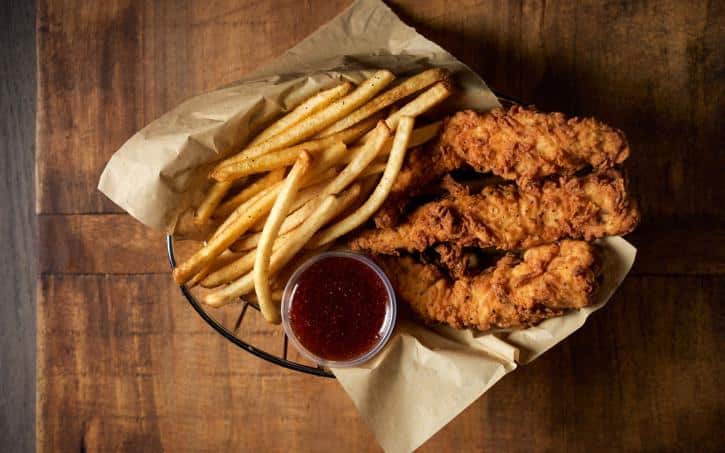
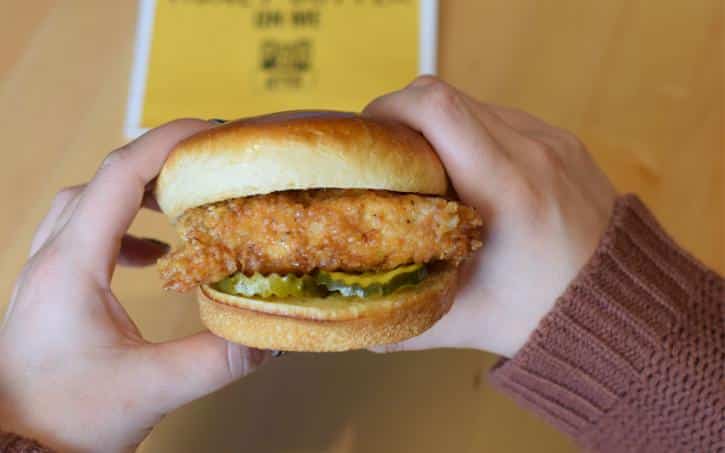
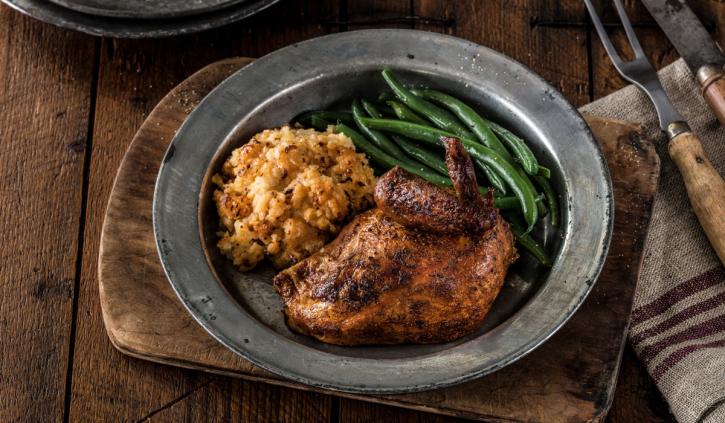
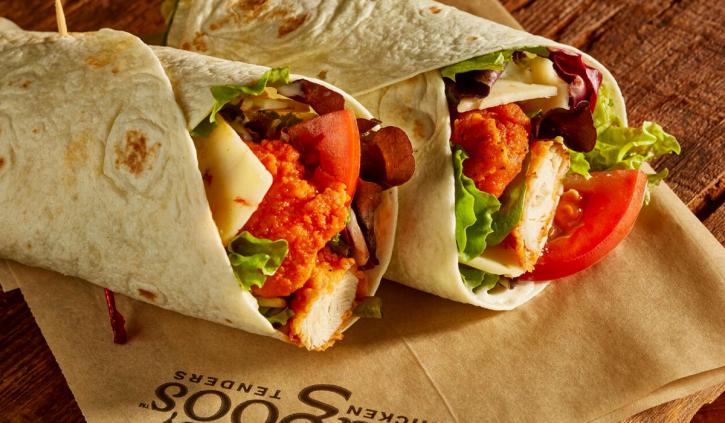
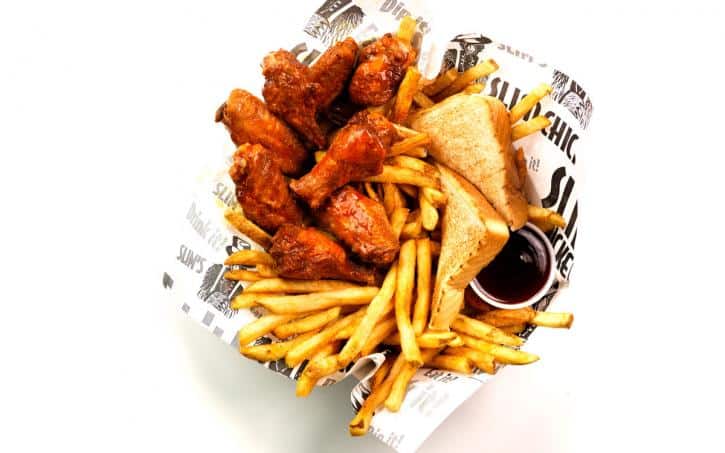
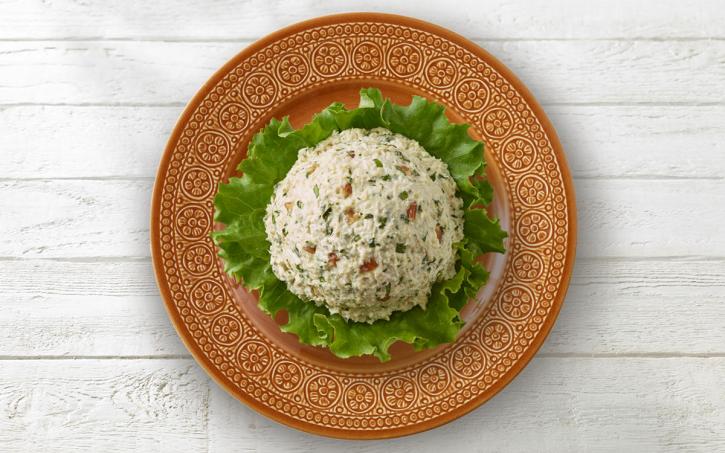
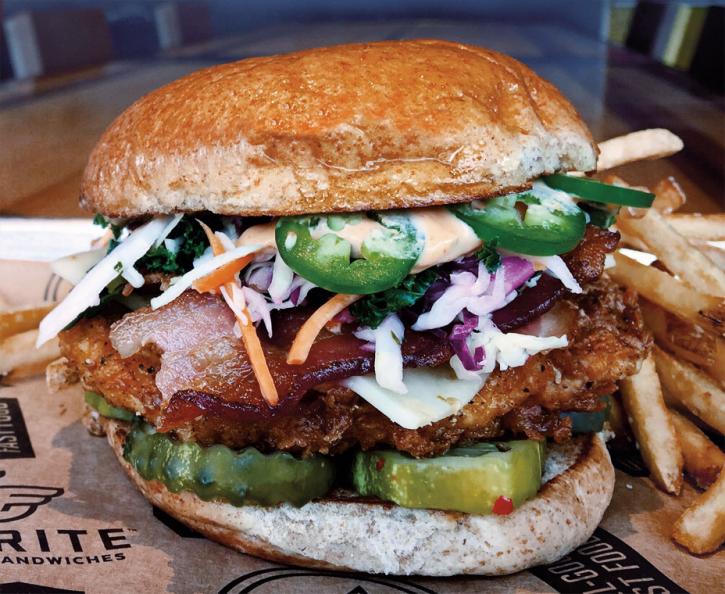
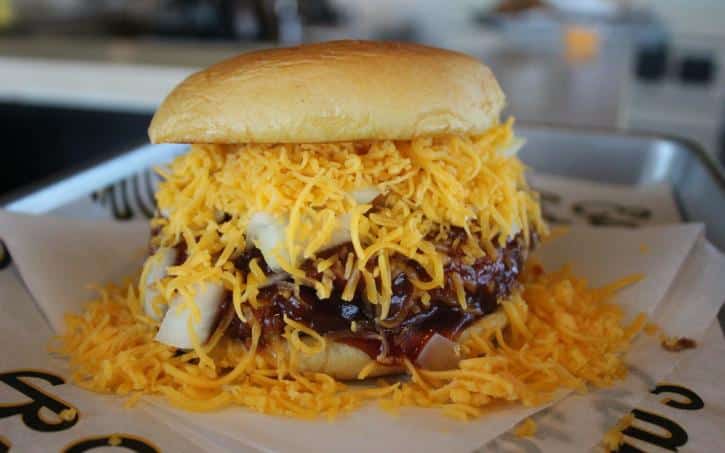
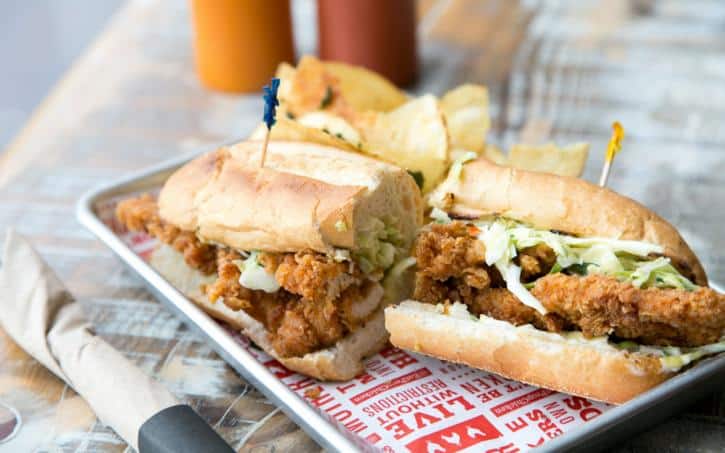
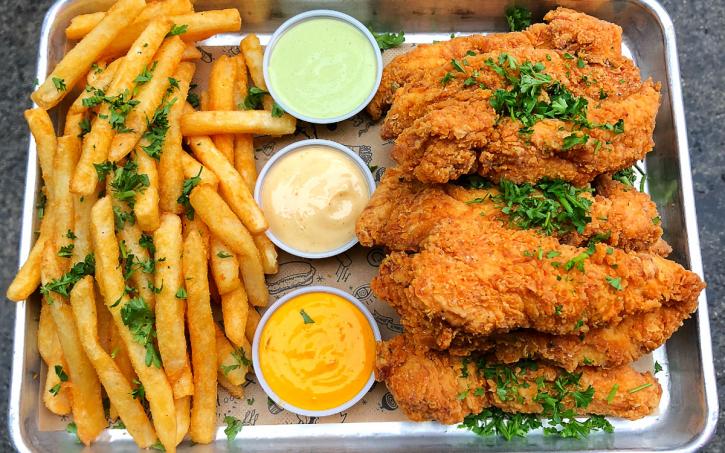
Primed For Lift-Off
With average-unit volumes hovering around $4.5 million, it’s hard to debate Chick-fil-A’s perch atop the quick-service chicken mountain. The chain, which has shown zero signs of curtailing its dominant growth, is joined by several heavy-hitters, like KFC, Popeyes, Church’s, Raising Cane’s, Zaxby’s, and more, not to mention what seems like an endless supply of startup concepts, in a quest to sate the country’s chicken obsession. Will another concept rise and challenge these stalwarts? It won’t be easy. But there’s no question there’s plenty of room in the chicken category to expand and thrive in markets across the nation. Here are 10 brands ready to take flight. Click the arrows in the picture above to begin the story.
PDQ
PDQ had success written into its business plan from day one. Created by MVP Holdings CEO Nick Reader and Bob Basham, one of the co-founders of Outback Steakhouse, PDQ was more than two years in planning before it debuted October 30, 2011 in Tampa, Florida. Inspiration struck when Basham and Reader found a neighborhood chicken joint called Tenders during a North Carolina road trip. They made a deal on the spot with the mom-and-pop and began crafting the concept you see today, which has spread across 11 states. PDQ (or People Dedicated to Quality) opened its latest restaurant March 20 at the Tampa International Airport’s Southwest and Frontier Airside C. This marked the debut airport unit for PDQ as well as its first to offer breakfast. There are currently 62 locations with stores slated for Norman, Oklahoma; Skokie, Illinois; Orland Park, Illinois; Winter Park, Florida; Tallahassee, Florida; Orlando, Florida; and Deerfield Beach, Florida. Back in 2016, Reader told QSR 100 units was on PDQ’s radar. In that year’s Drive-Thru study, PDQ showed why it’s been such a hit in markets its opened so far. At 97.4 percent, PDQ topped the 15-brand study for employees who “made eye contact.” Coming in at the same clip, PDQ was also No. 1 for “pleasant demeanor,” even besting fellow-chicken chain Chick-fil-A, often cited as the benchmark for customer service in this field. It was second behind Chick-fil-A in the “smiled” metric at 84.6 percent, coming in ahead of Panera Bread and Starbucks, and said “thank you” 92.3 percent, which, again, trailed only Chick-fil-A.
Cowboy Chicken
The rotisserie-focused concept is hardly new to the scene—it debuted in 1981 when Phil Sanders, a textile salesman with a love for Westerns, opened a restaurant with his wife, Jeanette. But its growth story is something of a recent phenomenon. Heading into 2016, the concept boomed its unit count 37.5 percent and lifted sales nearly 40 percent. It hasn’t slow down. The 23-unit brand announced in February that it’s planning a California debut in San Diego’s Rancho Bernardo community this spring. According to its site, the franchise has locations picked and restaurants coming to nine new spots. Cowboy Chicken is growing deliberately by requiring franchisee candidates to have five-plus years of restaurant experience, liquid assets of at least $600,000, and net worth of $1.2 million. It also requires real estate experience in the market to be developed. Cowboy Chicken is tech savvy with its own mobile app, which allows guests to order ahead, pay with their phones at checkout, and earn awards. Forbes once labeled Cowboy Chicken as one “Hot Restaurant Chain to Buy into Now.”
Huey Magoo’s
Florida-based Huey Magoo’s is another chicken concept with hefty experience behind it. In November 2016, the concept, founded by Matt Armstrong and Thad Hudgens in 2014 near the University of Central Florida, was sold to a four former Wingstop executives. Ex-chief marketing officer Andy Howard, who has more than 35 years of industry experience, stepped in as president and CEO. Along with the original founders, Wes Jablonski, chairman of the board, Mike Sutter, executive vice president of operations and training, Shawn Lawler, operations supervisor, and Bill Knight, member of the board of directors, Huey Magoo’s is set for major growth. The tenders are always fresh (steroid and hormone free) and are served hand-breaded and made to order or grilled, and marinated for 24 hours. Yahoo News even voted the concept as the best Fried Chicken in Florida. There are seven units around Orlando, all about 1,800–2,200 square feet. Aramark runs a college campus location while the rest are in strip malls. Three franchises are set to open this year, including a Daytona Beach location before the concept sets its franchise growth nationwide. “We want to pick quality franchisees and make sure they love Huey Magoo’s as much as I do, have the drive and passion, and give over-the-top hospitality to every one of our customers,” Howard told QSR.
Slim Chickens
As Greg Smart, the concept’s co-founder and chief brand officer put it in a January release, “We’ve been around since 2003 and franchising since 2014, but in many ways, we are just getting started.” The 67-unit chain debuted inside a former sushi restaurant in Fayetteville, Arkansas. Two years later, it opened a second unit. By 2008, expansion was at full tilt with five new openings. Six regional franchise deals were signed in 2014 and Slim Chickens has climbed the unit ladder ever since. In January, Slim Chickens launched a loyalty app and online ordering service. It expects to generate as much as 2 percent of its sales revenue from the platform in 2018. It was tested in five corporate stores before rolling out systemwide. The company said it hopes to have 100,000 loyalty members by year’s end. In addition to domestic growth, Slim Chickens is expanding internationally. Also in January, the brand announced plans to develop in the U.K and Ireland. There are currently 250 total locations under development in the U.S. and Middle East, the company said. “We formed this company on the highest-quality product and highest-quality service,” Tom Gordon, cofounder, told QSR. The tenders are buttermilk marinated, breaded when ordered, and served with one of 10 dipping sauces in less than 5 minutes.
Chicken Salad Chick
Chicken Salad Chick began with a stay-at-home mom selling her chicken salad recipe door-to-door. Stacy Brown launched her first brick-and-mortar unit in 2008 in Auburn, Alabama, with hopes of expanding the brand. Scott Deviney came on as CEO in 2015 and has helped triple the concept’s footprint with a growth rate of 165 percent. The brand brought in $160 million in sales and lifted average-unit volume by 100 percent as well in that span. There are 85 units selling more than a dozen styles of chicken salad. Chicken Salad Chick is on the verge of opening its eight Atlanta metro store in Cumming early next month. During the first quarter, Chicken Salad Chick signed six franchise agreements to develop a dozen locations, including Houston; Johnson City, Tennessee; and Biloxi, Mississippi. The brand opened six Southeast units in the quarter. For 2017, the chain achieved same-store sales growth of 8.4 percent on top of double-digit gains the prior year, it said. It also witnessed a 14 percent AUV increase at the end of last year. “We’re riding that momentum as we close out the first quarter and, with the help of our dedicated and loyal franchisees, are confident that we’ll continue to propel the brand forward throughout 2018 as we expand Chicken Salad Chick’s footprint,” Deviney said in a release.
Starbird
The self-described “super-premium fast-food” concept was designed to scale from the outset. Founder and CEO Aaron Noveshen, who also runs parent consulting company, The Culinary Edge, opened his second outpost of the Bay Area brand 14 months after the first. Noveshen added that Starbird was picked by The Culinary Edge as its brand platform due to the chicken segment’s vast potential. “We saw a gap in the marketplace for a differentiated fried-chicken position, and this was something we wanted to go after,” he said. Starbird, which raised close to $5 million for expansion in 2016, deploys a brining process and then uses proprietary breading and battering, as well as seasonings for its chicken. It’s fried in rice bran oil to present a clean flavor that’s also lighter than your average fry. Starbird is taking a real estate focused strategy to growth. It wants to combine dine-in, takeout, car delivery, and other off-premises business to perfection at each location. There are units in San Jose, Foster City, and Sunnyvale, California, to go along with an outpost in Levi’s Stadium.
Flyrite Chicken
The Austin-based fast casual, which has East and North units in Texas’ capital city, is all about turning the drive-thru experience on its head. Mainly: You can pick up a six-pack of craft beer with your chicken entrée. There’s also sparkling wine, cold brew, organic 1 percent milk, and Pinot Gris, among other choices, if you’re looking for a different out-of-the-box, pick-up option. Flyrite is also a believer in planet-friendly packaging and helping to fund school lunches through its Lunch Money Fund. In the past, founder Kevin Warden assisted Which Wich in its Texas growth as CEO of franchisee Red Mark Development. The restaurant’s menu and operations were refined by Warden and his business partners at County Line, a chain of full-service barbecue joints. Quirino “Q” Silva and Dallas Miller helped curate the offerings and prepare the unique concept for scalability. In addition to premium chicken—sandwiches, salads, wraps, and strips—guests can order milkshakes, tots, kale slaw, and breakfast tacos, including the Chicken & Waffle, which serves a chicken tender in a house-made waffle.
Super Chix
Super Chix began as a YUM! Brands test store in Arlington, Texas. Nick Ouimet, who developed the concept, then partnered with a Dallas-based investment firm to purchase Super Chix from YUM! in 2015 when it was a two-unit chain. SuperChix Holdings LLC set its sight on expansion for the concept, which garnered a devoted following for its hand-dipped fried chicken and frozen custards. The chicken is marinated daily, hand-breaded, and cooked in refined peanut oil for 4 minutes. “Our philosophy is everyday elevated,” he told QSR in August. “… I am not trying to be uber cheffy. I want to do really good versions of what people like.” Super Chix is also a couple of years into sporting a new design built by Dallas-based Studio 11. The focal point is a textured white brick wall with hand-drawn images depicting the concept’s many specially sourced, high-quality ingredients. Vegetables are delivered to the restaurant whole every day and sliced by hand. Pickles are thick cut and Texas grown. Only the best, Super Chix says on its site, for what it dubs “The Last True Chicken Sandwich.”
Proposition Chicken
The California-cult concept, founded in 2013 on Market Street, took its time expanding, scouting locations for two years before landing in Oakland’s Lakeshore Avenue. That reality isn’t all that surprising when you look at the care that goes into creating this brand on a daily basis, and the involved process it takes to keep running. Prop C serves chicken three ways—fried, rotisserie, and fake (crispy barbecue tofu)—in sandwiches, salads, and entrees. The culinary process takes free range, air-chilled chickens from Mary’s Free Range organic, pasture-raised offerings, which are air-cooled after slaughter to prevent the spread of bacteria, and cuts them into pieces before brining overnight in saltwater with rosemary, lemon, and roasted onions. Prop C washes, drains, dries, dredges in seasoned flour, and cools. After all that, chicken is fried, then fried again at a higher temperature. So yes, Prop C isn’t a chicken concept that could probably dot markets around the country in a hurry. But Ari Feingold’s brand, which he started with Elizabeth Wells, the owner of Southpaw BBQ and Brewery, and Max Cohen, the co-owner of Straw restaurant, isn’t lacking for accolades. It also gives back. Since 2016, Prop C has also donated 10 percent of all dine-in sales every Monday to a local non-profit on a rotating monthly basis.
Sticky’s Finger Joint
Founded by Jon Sherman and Paul Abrahamian in 2012, the concept is preparing to open a new Union Square location. Currently there are four New York City units serving up eclectic takes on the chicken classic. Think Salted Caramel Pretzel, Buffalo Balsamic Blue, and Thai Fiesta. Growth has been steady. It took two years to open the second unit in Murray Hill. The third, in Hell’s Kitchen, and fourth, in the Financial District, arrived in the same year. That was last February. In May 2017, Sherman told QSR that they built the brand with scalable DNA. “We really thought this was a concept that was simple enough but elegant enough that people in New York would love it. And we really believed from the get-go that this would be a concept that could work in a lot of different places, in different states and markets as well,” he said, adding that new markets, perhaps in Washington, D.C., Boston, Philadelphia, Chicago, and New Jersey, could one day be on the radar.



